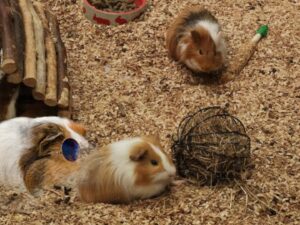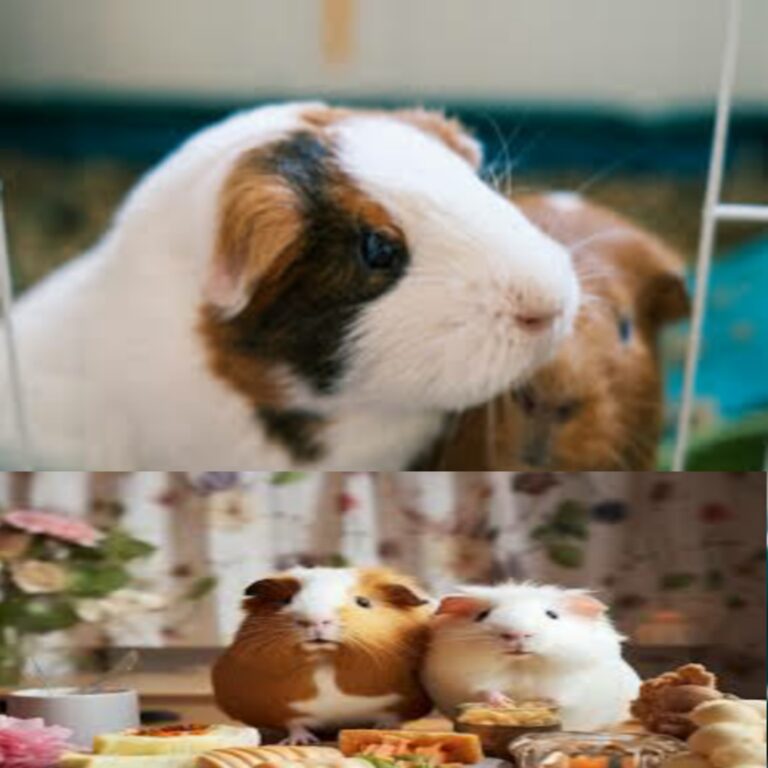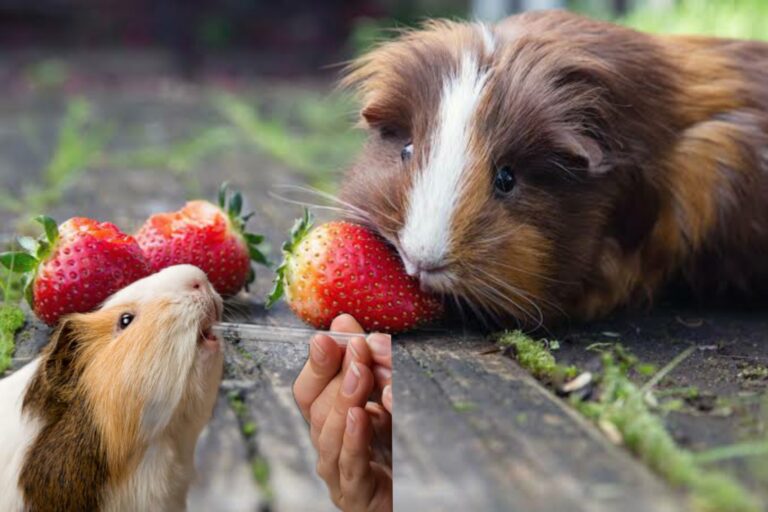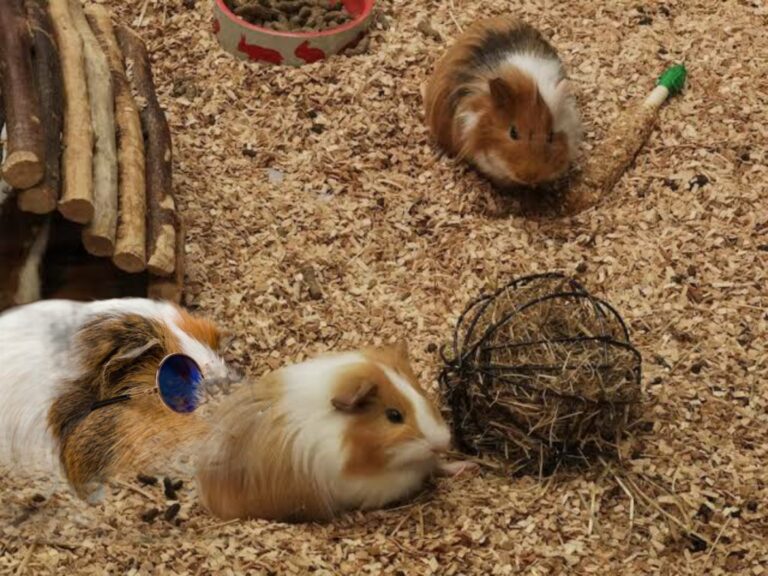
Hello everyone! It’s Caroline from Nigeria Guinea Pig Rescue, and today I want to talk about bringing your new guinea pigs home. This is such an exciting time, but it’s important to understand the behaviors you might see and why they happen. I’ll also share five steps you can take to help your new piggies settle in and start the important taming process.
One of the most common questions I receive is from people who have just adopted or bought their new guinea pigs. They often say things like, “My guinea pigs are scared of everything, they won’t come out of their hidey-hut, they aren’t eating or drinking, and they run away every time I come into the room. Are they okay, and what can I do to help them?”
First things first, don’t worry! If this sounds like your guinea pigs, their reaction to being brought home and placed in a completely new environment is completely normal, especially for baby piggies and those coming from pet shops. If you haven’t yet adopted guinea pigs or want to learn more about where to get them, check out my previous post for more information.
It’s perfectly normal for guinea pigs to be scared when they first arrive home. If we put ourselves in their little piggy shoes, we can understand why. Imagine being a baby guinea pig in a pet shop, taken away from your mother and placed in a new environment. Just as you start to make friends with other guinea pigs, you’re moved again to a place that feels unfamiliar. Having another guinea pig around can make a big difference, as they are herd animals and thrive in groups. Safety in numbers is essential for them.
Even if you have other guinea pigs, it’s still a lot for baby piggies to handle. For example, when I brought little Lyra home, she was very shy and timid because she hadn’t been well socialized before. In contrast, Twiggy, who was born in a rescue, was brave and confident. The stress of moving home can be overwhelming for them.
Guinea pigs are prey animals, which means they are naturally programmed to be on high alert for predators. They don’t have great eyesight, so their instinct to run away is very strong. Even harmless movements or sudden noises can make them dash for safety. I still catch my guinea pigs off guard sometimes, and they run away when I enter the room or move my arms unexpectedly.
Their other reaction is to freeze, which is a survival instinct. When they think they are in danger, they may play dead, hoping the threat will go away. As an owner, you’ll learn what scares them and what doesn’t. The taming process is a two-way street, where both you and your guinea pig learn how to interact with each other.
Now, let’s get into the five steps to help your guinea pigs settle in comfortably. The first two steps are about being prepared in advance.
Step 1: Prepare for the Journey Home
Think about how you will transport your new piggies. Use a pet carrier or a safe medium-sized cardboard box with a lid, so they have space to move around but can also feel secure in an enclosed space. Line it with newspaper and add plenty of hay or a blanket for them to hide in. Since they will be stressed, they might not eat or drink, but it’s good to have hay available just in case. If you’re traveling for a long time, consider bringing fresh vegetables, like cucumber, which has a high water content.
Step 2: Set Up Their New Cage
Have their new cage ready for when you get home. Make sure to include fresh food, hay, and water. You want to minimize the stressful journey time as much as possible. It’s also important to have hidey houses in the cage. While we’re all eager to see our new piggies, it’s best not to disturb their hiding spots. They will feel safer if they can stay hidden.
Step 3: Give Them Time to Adjust
Once you bring them home, leave them alone for a few days. Try not to stroke or handle them during this time. You can talk to them and observe them, but avoid looming over the cage or staring at them, as this can make them feel threatened. Ignoring them can help them realize you mean no harm. They will likely sneak out to eat and drink when they feel safe.
If you’re worried about their eating, you can place some hay, pellets, and vegetables inside their hidey hut so they have the option to eat while feeling secure.
Step 4: Look for Signs of Activity
The next day, check for signs that they have been active, such as poops around the cage. Pooping is a good indicator that they are eating normally. If you don’t see any poops and are concerned, you can always consult a vet. If your new guinea pig is naturally confident and outgoing, they may come up to you during feeding and cleaning, which is a great sign!
Step 5: Start Bonding
After a few days, you can begin the bonding process. Encourage your guinea pig to come out by offering treats, such as dried carrots or dried apples. If they won’t take the treats directly from you, try placing them on the floor in front of them. When they do come out, you can start to gently pet them. Always approach from the side so they can see your hand, rather than coming from above, which can seem threatening.
Touching their ears can also help build a bond, as it’s a way guinea pigs interact with each other. After a week or two, you can start handling them. They may still run away, but you can use methods like encouraging them into a cuddle sack or a beanie hat and then scooping them up together.
Lap time is a wonderful way to bond with your piggies, so try to do it often. You can hand-feed them and pet them, and over time, they will learn that you are not a threat.
If you’ve had your guinea pigs for a while and didn’t follow all these steps, don’t worry! These tips are meant to make the process easier for both you and your guinea pig. With time and effort, they will grow to love you.
Thank you for reading! If you enjoyed this information, please let us know by giving us a thumbs up. I’d love to hear about your own piggies and any taming tips you have, so feel free to leave a comment below. If you have any questions, just ask, and I’ll be happy to help. That’s all from me and the piggies for now. See you next time!



